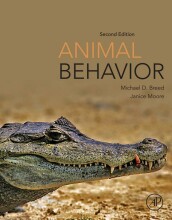Summary: Human And Animal Biology, Part 2
- This + 400k other summaries
- A unique study and practice tool
- Never study anything twice again
- Get the grades you hope for
- 100% sure, 100% understanding
Read the summary and the most important questions on Human and Animal Biology, Part 2
-
2 Organism: digestive system and energy metabolism
-
2.1 Energy Metabolism and Thermoregulation
-
Macronutrients: proteins, carbs and fats turn into micronutriens:
Proteins --> amino acids
Carbs --> glucose
Fats --> fatty acids + glycerides -
14 Energy Metabolism and Thermoregulation
-
What is the difference between "lipogenesis" and "lipolysys"?
Lipogenesis is the conversion of fatty acid and glycerol into fats
Lipolysis is the metabolic pathway through which lipid triglycerides are hydrolyzed into a glycerol and three fatty acids. -
What is the difference between "alpha-oxidation" and "beta-oxidation"?
Beta oxidation: Major mechanism, occurs in the mitochondria matrix. 2-C units are released as acetyl CoA per cycle.
Alpha oxidation: Predominantly takes place in brain and liver, one carbon is lost in the form of CO2 per cycle. -
What is the difference between "glycogenesis" and "glyconolysis"?
Glycogenesis is the process of storing excess glucose for use by the body at a later time. Glycogenolysis occurs when the body, which prefers glucose as an energy source, needs energy. The glycogen previously stored by the liver is broken down to glucose and dispersed throughout the body.
Glycogenolysis is the biochemical pathway in which glycogen breaks down into glucose-1-phosphate and glycogen. The reaction takes place in the hepatocytes and the myocytes. The process is under the regulation of two key enzymes: phosphorylase kinase and glycogen phosphorylase. -
How much ATP is synthesized in aerobic vs. Anaerobic metabolism?
Aerobic: 32 ATP
Anaerobic: 2 ATP -
What are 4 ways of maintaining temperature balans?
- Radiation: sun and animals, mainly infrared
- Evaporation: conversion liquid to gas; heat
loss - Convection: heat exchange to moving gas or liquidor liquid
- Conduction: heat exchange between
objects that are in contact
- Radiation: sun and animals, mainly infrared
-
What is the difference between "Poikilothermicanimals" and "Homeothermic animals"?
Poikilothermic animals:
Body temperature is not regulated, but conform to the outside environment
Homeothermic animals:
Body temperature regulated to be kept constant independant from environment -
Evaporation: sweating. Which system stimulates sweat production and which neurotransmitters are responsible?
Sympathetic nervous systemACh -
What are some adaptions of thermoregulation in the blood supply?
Cold zone:- Vasoconstriction
- Shivering
- Vasodilation
- Sweating
-
15 GI-tract and Foraging Behaviour
This is a preview. There are 6 more flashcards available for chapter 15
Show more cards here -
What trophic level are tertiary consumers?
4th trophic level
1st are producers
- Higher grades + faster learning
- Never study anything twice
- 100% sure, 100% understanding































